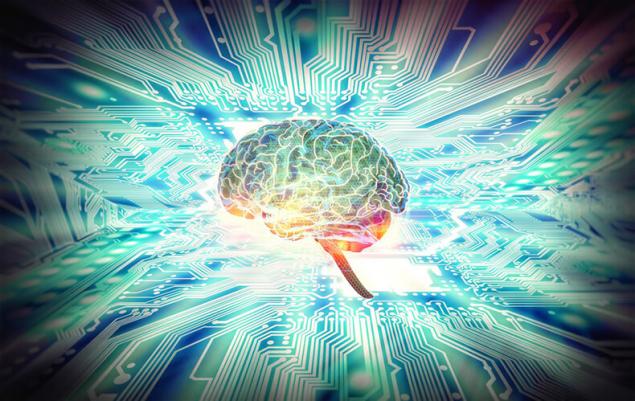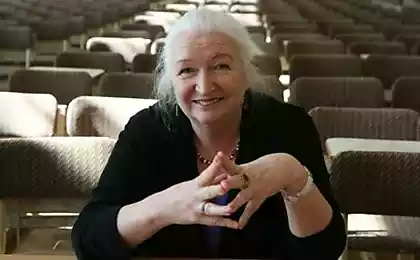658
What is "to be awake" from the point of view of neuroscience
What does it mean to be conscious? One of the most popular answers to this question is the Cartesian "I think, therefore I exist." Then the following question arises: what it means to think and whether it is possible by means of rational methods to answer this question?
The successes in experimental and theoretical neuroscience the last few decades show that consciousness is still possible and should be explored by scientific methods. While neuroscientists approach the question of consciousness from philosophy and theology side: not looking for the answer to the existential question "What is consciousness?", but rather try to determine the characteristics of the brain that are different in a state of clear consciousness and when violations or lack of it.

How to study consciousness?
To be awake is to experience the thrill, hear the sound, to think, to feel, to see. As in the laboratory and in clinical medicine, the level of consciousness in the first place is determined by the response to sound, speech, visual and other incentives ("if you feel pain, squeeze my hand twice, if not once").
This approach allows to differentiate the state of unconsciousness, when we do not feel (it is a deep, dreamless sleep, General anesthesia, coma, vegetative state) from a state of consciousness. From this definition it is possible to conclude that the state of consciousness of contact with the outside world is not required —for example, the person remains conscious when dreaming dreams, because it feels audible and visual senses.
On the other hand, this approach has significant drawbacks. First, what if the person remains conscious but unable to report it (e.g., paralyzed)? Second, a necessary condition is the ability to understand speech. Does this mean automatically that infants and animals are unconscious? You obviously don't.
Therefore, for a more objective characteristics of a state of consciousness neurobiology combine the analysis of responses to stimuli with simultaneous recording of processes in the brain. For example, when we hear the sound of a violin, in the brain activates certain areas. Should work in reverse: if these are the same areas of the brain to stimulate, the feeling of the sounds of the violin and in silence. In theory, if we compare the activity of the brain in the silence and the sound of the violin, we will get the answer to the question "how we recognize the sounds of violin". Similarly, about the status of consciousness and its disorders: take the waking man and the man in a coma, compare, and define. But that's the theory, but in practice key issues in the science of consciousness remains two: "What to measure? (what is this "brain activity") and "where to measure?".
Where is consciousness?
A long time ago not news, that the existence of consciousness is necessary to the brain. However, it is still an open question about necessary and sufficient brain areas for consciousness States.
For example, damage to the cerebellum does not lead to loss of consciousness, despite the fact that the cerebellum is four times more neurons than the cerebral cortex and developed ascending and descending connections with other parts of the brain. But damage to the brainstem results in an immediate coma.
While a normal brain stem is necessary but not sufficient conditions for the existence of consciousness in patients with severe damage to the cortex of the brain, but with functioning brain stem, usually formed vegetative state, in which the person retained functions such as breathing, circulation, digestion, etc., but lose the ability to interact with the outside world, to conscious activities. The areas of cortex involved in the formation of consciousness and how important the plan, each of them is the subject of active research.

Neurophysiological markers of consciousness
The familiar picture of a movie: doctor at the bedside of a patient in a coma, tensely watching the screen, where the running waves of the electroencephalogram (EEG) of the brain. Analyzes EEG signals from electrodes attached to the head, and passes the integrated signal to the screen.
A signal with low amplitude, but high frequency is correlated with the state of consciousness; a high amplitude, but rare waves are a sign of lack of consciousness. Despite the fact that this method was first applied to the person proposed in 1924 (and in the animals tested even earlier), it still remains one of the most useful and sensitive methods for differentiating States of consciousness and its disorders.
Over time it became clear that the waves that are recorded by the EEG is the result of the interaction of neurons in the thalamus, cortex and brain stem. At the same time, it became obvious that this method is the identification of consciousness is not always reliable: for example, when the electrodes were located inside the brain of a sleeping person (a more sensitive method of registration of EEG than EEG recorded by electrodes on the scalp), it was discovered that certain areas of the brain still active and during the phase of deep sleep.
Thus it is necessary to take into account that research is carried out mainly in adults without pathology. Can we transfer the results obtained in healthy adults, for example, people with extensive brain damage? One of the children. On animals?
An integrated approach
A significant breakthrough in the research of consciousness occurred in 2013 when a group of neuroscientists under the leadership of Giulio Tononi and I feel sorry for Massimini from the universities of San Paolo and Milan have proposed a new holistic approach to the study of consciousness based on the theory of integrated information. Whereas previous studies focused only on a single aspect of brain activity, the researchers proposed to introduce an index that combines multiple parameters.
The integrated information theory predicts that the States of consciousness needed as the differentiation and integration of brain activity. What is it? Differentiation of brain activity reflects how unique the brain signals. For example, in clinical practice, entropy of brain activity is a measure of depth of anaesthesia: the less "noise" is detected on the EEG, the deeper the depth of anesthesia. Integrity — a measure of how coordinated parts of the brain: for example, when falling asleep (reduced integration) the number of connections between different brain areas is reduced.

Individually, these parameters do not predict the state of consciousness in 100% of cases, however, the so-called difficulty index perturbations (the Perturbational Complexity Index ,PCI), combining these two parameters, correctly allowed to properly assess the state of mind of the 32 people who participated in the study.
Moreover, the difficulty index perturbations was similar as in healthy awake volunteers, and completely paralyzed patients in mind and differed in different types of impaired consciousness such as vegetative state and a state of minimal consciousness.
The effect of the carpenter: muscle memory exists
Our actions are programming our future and propensity to disease
Further development of empirical methods to measure consciousness will respond to a wide range of issues, ranging from clinically important "Where is the line between the finite mind completely paralyzed patients and vegetative state?" to the philosophical "at what point infants begin to be conscious?" and "does consciousness exist in animals?".published
Author: Dasha Ovsiannikova
Source: neuronovosti.ru/in-conciousness/
The successes in experimental and theoretical neuroscience the last few decades show that consciousness is still possible and should be explored by scientific methods. While neuroscientists approach the question of consciousness from philosophy and theology side: not looking for the answer to the existential question "What is consciousness?", but rather try to determine the characteristics of the brain that are different in a state of clear consciousness and when violations or lack of it.

How to study consciousness?
To be awake is to experience the thrill, hear the sound, to think, to feel, to see. As in the laboratory and in clinical medicine, the level of consciousness in the first place is determined by the response to sound, speech, visual and other incentives ("if you feel pain, squeeze my hand twice, if not once").
This approach allows to differentiate the state of unconsciousness, when we do not feel (it is a deep, dreamless sleep, General anesthesia, coma, vegetative state) from a state of consciousness. From this definition it is possible to conclude that the state of consciousness of contact with the outside world is not required —for example, the person remains conscious when dreaming dreams, because it feels audible and visual senses.
On the other hand, this approach has significant drawbacks. First, what if the person remains conscious but unable to report it (e.g., paralyzed)? Second, a necessary condition is the ability to understand speech. Does this mean automatically that infants and animals are unconscious? You obviously don't.
Therefore, for a more objective characteristics of a state of consciousness neurobiology combine the analysis of responses to stimuli with simultaneous recording of processes in the brain. For example, when we hear the sound of a violin, in the brain activates certain areas. Should work in reverse: if these are the same areas of the brain to stimulate, the feeling of the sounds of the violin and in silence. In theory, if we compare the activity of the brain in the silence and the sound of the violin, we will get the answer to the question "how we recognize the sounds of violin". Similarly, about the status of consciousness and its disorders: take the waking man and the man in a coma, compare, and define. But that's the theory, but in practice key issues in the science of consciousness remains two: "What to measure? (what is this "brain activity") and "where to measure?".
Where is consciousness?
A long time ago not news, that the existence of consciousness is necessary to the brain. However, it is still an open question about necessary and sufficient brain areas for consciousness States.
For example, damage to the cerebellum does not lead to loss of consciousness, despite the fact that the cerebellum is four times more neurons than the cerebral cortex and developed ascending and descending connections with other parts of the brain. But damage to the brainstem results in an immediate coma.
While a normal brain stem is necessary but not sufficient conditions for the existence of consciousness in patients with severe damage to the cortex of the brain, but with functioning brain stem, usually formed vegetative state, in which the person retained functions such as breathing, circulation, digestion, etc., but lose the ability to interact with the outside world, to conscious activities. The areas of cortex involved in the formation of consciousness and how important the plan, each of them is the subject of active research.

Neurophysiological markers of consciousness
The familiar picture of a movie: doctor at the bedside of a patient in a coma, tensely watching the screen, where the running waves of the electroencephalogram (EEG) of the brain. Analyzes EEG signals from electrodes attached to the head, and passes the integrated signal to the screen.
A signal with low amplitude, but high frequency is correlated with the state of consciousness; a high amplitude, but rare waves are a sign of lack of consciousness. Despite the fact that this method was first applied to the person proposed in 1924 (and in the animals tested even earlier), it still remains one of the most useful and sensitive methods for differentiating States of consciousness and its disorders.
Over time it became clear that the waves that are recorded by the EEG is the result of the interaction of neurons in the thalamus, cortex and brain stem. At the same time, it became obvious that this method is the identification of consciousness is not always reliable: for example, when the electrodes were located inside the brain of a sleeping person (a more sensitive method of registration of EEG than EEG recorded by electrodes on the scalp), it was discovered that certain areas of the brain still active and during the phase of deep sleep.
Thus it is necessary to take into account that research is carried out mainly in adults without pathology. Can we transfer the results obtained in healthy adults, for example, people with extensive brain damage? One of the children. On animals?
An integrated approach
A significant breakthrough in the research of consciousness occurred in 2013 when a group of neuroscientists under the leadership of Giulio Tononi and I feel sorry for Massimini from the universities of San Paolo and Milan have proposed a new holistic approach to the study of consciousness based on the theory of integrated information. Whereas previous studies focused only on a single aspect of brain activity, the researchers proposed to introduce an index that combines multiple parameters.
The integrated information theory predicts that the States of consciousness needed as the differentiation and integration of brain activity. What is it? Differentiation of brain activity reflects how unique the brain signals. For example, in clinical practice, entropy of brain activity is a measure of depth of anaesthesia: the less "noise" is detected on the EEG, the deeper the depth of anesthesia. Integrity — a measure of how coordinated parts of the brain: for example, when falling asleep (reduced integration) the number of connections between different brain areas is reduced.

Individually, these parameters do not predict the state of consciousness in 100% of cases, however, the so-called difficulty index perturbations (the Perturbational Complexity Index ,PCI), combining these two parameters, correctly allowed to properly assess the state of mind of the 32 people who participated in the study.
Moreover, the difficulty index perturbations was similar as in healthy awake volunteers, and completely paralyzed patients in mind and differed in different types of impaired consciousness such as vegetative state and a state of minimal consciousness.
The effect of the carpenter: muscle memory exists
Our actions are programming our future and propensity to disease
Further development of empirical methods to measure consciousness will respond to a wide range of issues, ranging from clinically important "Where is the line between the finite mind completely paralyzed patients and vegetative state?" to the philosophical "at what point infants begin to be conscious?" and "does consciousness exist in animals?".published
Author: Dasha Ovsiannikova
Source: neuronovosti.ru/in-conciousness/
Sergey Kovalev: Follow the basic information hygiene
Productive solitude: become the best version of yourself






















